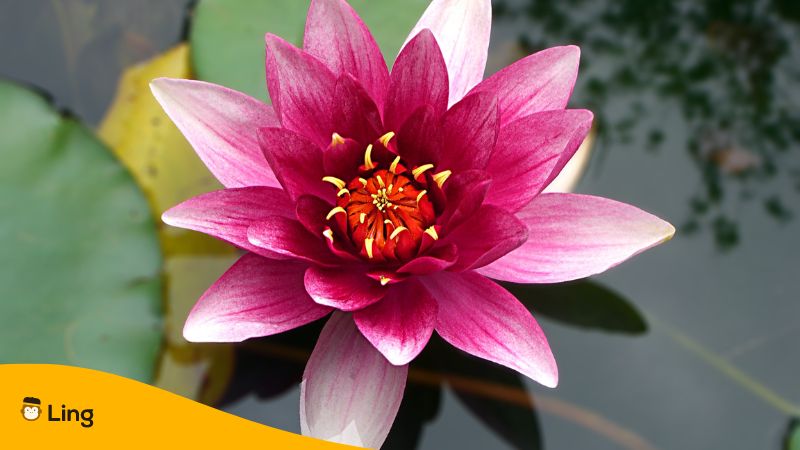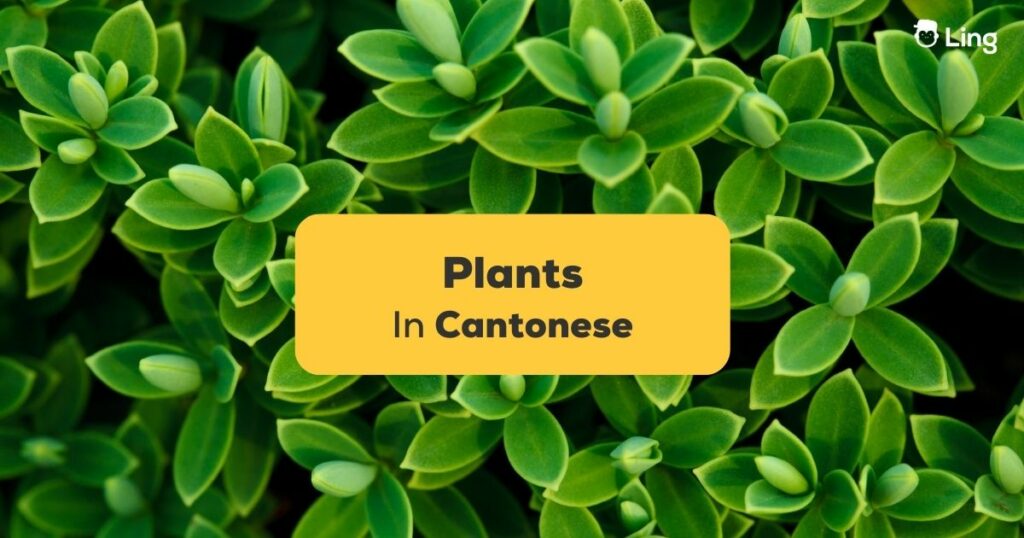Hey there, fellow anthophiles (plant enthusiasts)! Are you tired of calling all your green friends “plant” or “leafy thing”? Do you want to impress your Cantonese-speaking friends with your botanical knowledge of the names of plants in Cantonese? Well, you’ve come to the right place!
Plants hold a special place in Cantonese Chinese culture, with many species having medicinal and culinary uses. So, not only will learning how to say these plants in Cantonese expand your vocabulary, but it will also give you a deeper appreciation for Cantonese culture. That’s why in this article, we’ll discuss tons of different plants and how to say them in Cantonese. And don’t worry because we won’t use difficult-to-pronounce botanical names. We’ll keep it simple and easy to remember.
So, if you plan on growing your arboretum or just want to add a few new plants to your collection, why not start with some local Hong Kong plants? And hey, you’ll be able to impress your Cantonese-speaking friends by throwing out these words.
So, are you ready to dive into the beautiful world of Cantonese plant names? Let’s get started!

Which Plants Grow In Hong Kong?
Welcome to the exciting world of Hong Kong’s local plants! From towering banyan trees to the deliciously sweet pineapple, there’s no shortage of interesting flora. Let’s start with the iconic bauhinia flower, Hong Kong’s official floral emblem. Not only is this flower beautiful to look at, but it also has medicinal properties, with its leaves used to treat fever and inflammation.
Next, we have the glorious flame tree, which is hard to miss with its vibrant red-orange flowers. This tree is known for its resilience and can be found growing in harsh conditions, making it a symbol of strength and perseverance in Hong Kong.
Now, let’s talk about a beautiful and delicious plant – the dragon fruit! This cactus fruit is covered in vibrant pink scales and has sweet, juicy flesh perfect for snacking. And yes, you can grow this plant in your backyard in Hong Kong!
If you’re looking for a plant that’s both aesthetically pleasing and has practical uses, look no further than the evergreen camphor tree. This tree is a common sight in Hong Kong parks and has medicinal properties, with its leaves and bark being used to make traditional ointments and balms.
And finally, we can’t forget about the humble banana tree. This tropical plant is a staple in Hong Kong’s cuisine, with its leaves being used to wrap and steam dumplings and its fruit being a popular snack. Plus, growing your bananas at home is a great way to impress your friends and family!

Besides these iconic plants, there are many others that you can glance at while visiting Hong Kong:
- Chinese Hibiscus – Large, vibrant flowers in various colors, including bright red, orange, and pale pink.
- Poinsettia – A popular plant during the holiday season, with bright red leaves that resemble flowers.
- Chinese Evergreen – A hardy plant that’s good to care for and features large, variegated leaves.
- Spider Lily – Delicate white petals with a striking, dark center.
- Lotus Flower – A beautiful aquatic plant with large, showy flowers that range in color from white to pink.
- Orchids – A diverse family of plants that are prized for their beauty and come in a wide range of colors and shapes.
- Bamboo – Tall, slender stalks with delicate leaves that are used for everything from furniture to cooking utensils.
- Chrysanthemums – A popular flower in Chinese culture that comes in various colors and is often given as gifts on special occasions.
- Chinese Peony – A beautiful, fragrant flower that symbolizes wealth and prosperity in Chinese culture.
- Golden Shower Tree – A tropical tree with bright yellow flowers that hang in long clusters, often used for ornamental purposes.
How To Say These Plants In Cantonese?
Ok, let’s now dive into what brought us here. How do we say different plant names in Cantonese? Check the next table and learn how to pronounce them!
| English | Cantonese | Pinyin |
| Rose | 玫瑰 | mei2 gui1 |
| Tulip | 鬱金香 | yu4 jin1 xiang1 |
| Daisy | 雛菊 | chu2 ju2 |
| Sunflower | 向日葵 | xiang4 ri4 kui2 |
| Lily | 百合 | bai3 he2 |
| Marigold | 萬壽菊 | wan4 shou4 ju2 |
| Petunia | 矮牽牛 | ai3 qian1 niu2 |
| Chrysanthemum | 菊花 | ju2 hua1 |
| Hydrangea | 繡球花 | xiu4 qiu2 hua1 |
| Pansy | 三色堇 | san1 se4 jin1 |
| Iris | 鳶尾花 | yuan1 wei3 hua1 |
| Zinnia | 百日草屬 | bai3 ri4 cao3 shu3 |
| Geranium | 天竺葵 | tian1 zhu2 kui2 |
| Azalea | 映山紅 | ying4 shan1 hong2 |
| Camellia | 茶花 | cha2 hua1 |
| Lavender | 薰衣草 | xun1 yi1 cao3 |
| Daffodil | 水仙花 | shui3 xian1 hua1 |
| Crocus | 番紅花 | fan1 hong2 hua1 |
| Peony | 牡丹 | mu3 dan1 |
| Begonia | 秋海棠 | qiu1 hai3 tang2 |
| Hollyhock | 蜀葵 | shu3 kui2 |
| Poppy | 罌粟 | ying1 su4 |
| Amaryllis | 阿瑪麗利斯 | a1 ma3 li4 li4 si1 |
| Phlox | 福祿考 | fu2 lu4 kao3 |
| Orchid | 蘭花 | lan2 hua1 |
| Sweet pea | 甜豌豆 | tian2 wan1 dou4 |
| Black-eyed Susan | 黑眼蘇珊 | hei1 yan3 su1 shan1 |
| Morning glory | 喇叭花 | la3 ba1 hua1 |
| Snapdragon | 金魚草 | jin1 yu2 cao3 |
| Cosmos | 宇宙 | yu3 zhou4 |
Other Words Related To Plants In Cantonese
| English | Cantonese | Pinyin |
| Trees | 樹木 | shu4 mu4 |
| Shrubs | 灌木 | guan4 mu4 |
| Grasses | 草 | cao3 |
| Succulents | 多肉植物 | duo1 rou4 zhi2 wu4 |
| Ferns | 蕨類植物 | jue2 lei4 zhi2 wu4 |
| Mosses | 苔蘚 | tai2 xian3 |
| Lichens | 地衣 | di4 yi1 |
| Cacti | 仙人掌 | xian1 ren2 zhang3 |
| Aquatic plants | 水生植物 | shui3 sheng1 zhi2 wu4 |
| Climbers | 登山者 | deng1 shan1 zhe3 |
| Groundcovers | 地被植物 | di4 bei4 zhi2 wu4 |
| Bulbs | 燈泡 | deng1 pao4 |
| Vines | 藤蔓 | teng2 wan4 |
| Herbs | 草藥 | cao3 yao4 |
| Fruits | 水果 | shui3 guo3 |
| Vegetables | 蔬菜 | shu1 cai4 |
| Wildflowers | 野花 | ye3 hua1 |
| Perennials | 多年生植物 | duo1 nian2 sheng1 zhi2 wu4 |
| Annuals | 年鑑 | nian2 jian4 |
| Biennials | 雙年展 | shuang1 nian2 zhan3 |
| Conifers | 針葉樹 | zhen1 ye4 shu4 |
| Palms | 手掌 | shou3 zhang3 |
| Bamboo | 竹子 | zhu2 zi3 |
| Carnivorous plants | 食蟲植物 | shi2 chong2 zhi2 wu4 |
| Epiphytes | 附生植物 | fu4 sheng1 zhi2 wu4 |
| Parasitic plants | 寄生植物 | ji4 sheng1 zhi2 wu4 |
| Medicinal plants | 藥用植物 | yao4 yong4 zhi2 wu4 |
| Aromatic plants | 芳香植物 | fang1 xiang1 zhi2 wu4 |
| Bonsai plants | 盆景植物 | pen2 jing3 zhi2 wu4 |
| Edible plants | 食用植物 | shi2 yong4 zhi2 wu4 |
| To Plant | 種植 | zhong3 zhi2 |
| To Rinse | 沖洗 | chong1 xi3 |
| To Water | 去水 | qu4 shui3 |
| To Kill | 殺 | sha1 |
| To Save | 保存 | bao3 cun2 |
| To Transplant | 移植 | yi2 zhi2 |
| Photosynthesis | 光合作用 | guang1 he2 zuo4 yong4 |
| Chlorophyll | 葉綠素 | ye4 lv1 su4 |
| Stamen | 蕊 | rui3 |
| Pistil | 雌蕊 | ci2 rui3 |
| Pollen | 花粉 | hua1 fen3 |
| Pollination | 授粉 | shou4 fen3 |
| Germination | 發芽 | fa1 ya2 |
| Roots | 根 | gen1 |
| Leaves | 樹葉 | shu4 ye4 |
| Stem | 幹 | gan1 |
| Trunk | 樹幹 | shu4 gan1 |
| Bark | 吠 | fei4 |
| Pruning | 修剪 | xiu1 jian3 |
| Fertilizer | 肥料 | fei2 liao4 |
| Compost | 堆肥 | dui1 fei2 |
| Mulch | 覆蓋物 | fu4 ke4 wu4 |
| Transpiration | 蒸騰作用 | zheng1 teng2 zuo4 yong4 |
| Xylem | 木質部 | mu4 zhi4 bu4 |
| Phloem | 韌皮部 | ren4 pi2 bu4 |
| Translocation | 易位 | yi4 wei4 |
| Dormancy | 休眠 | xiu1 mian2 |
| Transplanting | 移植 | yi2 zhi2 |
| Hybrid | 雜交種 | za2 jiao1 zhong3 |
| Species | 物種 | wu4 zhong3 |
| Genus | 屬 | shu3 |
| Botany | 植物學 | zhi2 wu4 xue2 |
| Horticulture | 園藝 | yuan2 yi4 |
| Landscaping | 園林綠化 | yuan2 lin2 lv1 hua4 |
| Greenhouse | 溫室 | wen1 shi4 |
| Garden bed | 花園床 | hua1 yuan2 chuang2 |
| Seeds | 種子 | zhong3 zi3 |
Start Your Garden
Whew! That was a lot of information in one article! Don’t be intimidated by this, though, since you can keep this article close to you whenever you need to return to it and check any translations or pronunciations. For now, after getting this incredible introduction to the Cantonese language, you must be thinking of a place to learn more about this language and culture. Don’t worry! I also have you covered!

Learn Cantonese With Ling
Learning the names of plants in Cantonese is just the beginning of a fascinating journey into the culture and traditions of Hong Kong and China. By expanding your knowledge of the local plants, you can gain a deeper understanding and appreciation of the natural world and the customs and beliefs of the people who live here.
If you’re interested in learning more about Cantonese or any other language, we recommend downloading Ling, a language-learning application that offers more than 60 languages worldwide. With Ling, you can learn at your own pace and from the comfort of your own home, using various engaging and interactive tools to help you master the language of your choice.
So whether you’re interested in learning Cantonese to expand your knowledge of plants or to connect with the people of Hong Kong on a deeper level, we invite you to download Ling for free and discover the joy of language learning for yourself.



































































